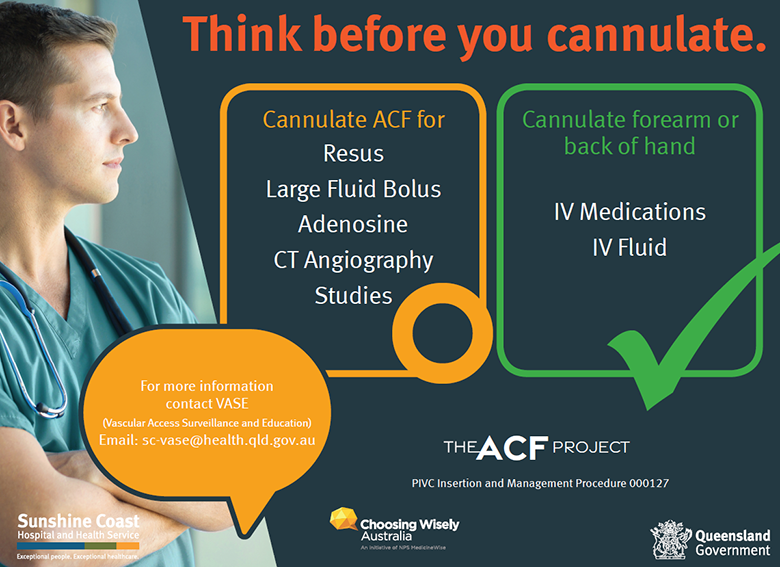A nurse and medical led quality project at the Sunshine Coast University Hospital emergency department (ED) to reduce antecubital fossa (ACF) inserted cannulas is delivering big benefits for patients. The project exemplifies Choosing Wisely principles of multidisciplinary, evidence-based, with a clear emphasis on improving quality of care and harm prevention.
There is good evidence in the literature to suggest a significantly higher risk of infections with ACF insertions. Baseline data indicated 80 per cent of cannula-related bloodstream infections in our hospital are a result of an ACF cannulation.
Our Queensland Health guidelines state that cannulas should be inserted in the ACF only if clinically indicated. The preferred site is the forearm or back of hand.
Staff often put cannulas in the ACF because it’s ‘quick and easy’ and insert them ‘just in case’, for example in case intravenous (IV) antibiotics may be required during the patient’s admission.
The ACF project encourages doctors and nurses to assess whether there is a clear need to insert an IV cannula in the ACF rather than ‘just because it’s easy’.
While IV cannulas are often an essential emergency medicine precursor to lifesaving treatment, they are not harmless. They can involve pain for the patients and there’s a risk of infection.
Nurse and doctor ACF champions encourage participation and engagement with the project and the guidelines, and the ACF project is part of the ongoing intern orientation and regular teaching of the ED’s nurses and doctors.
Infectious Diseases Staff Specialist Dr Shradha Subedi said: “The ACF project encapsulates how the collaboration of clinical champions across multiple departments can improve patient safety and outcomes. It’s really simple and makes a huge difference."
“When the project started in 2019 approximately 50 per cent of all cannulas inserted in the Emergency Department were placed in the ACF. Recent data demonstrates that rate is now 34 per cent,” she said.
The Sunshine Coast Hospital and Health Service Vascular Access Surveillance and Education Team continues to audit this data quarterly and will monitor trends over the two year period of the project.
